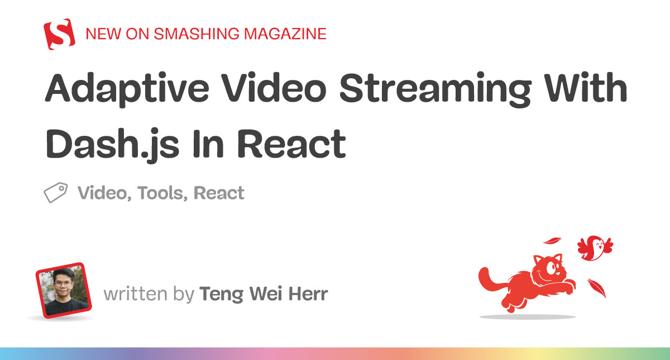Smashingmagazine
6d
53

Image Credit: Smashingmagazine
Adaptive Video Streaming With Dash.js In React
- Adaptive bitrate streaming is crucial for smooth video playback under slow network conditions or on low-end devices, as opposed to the limitations of the native HTML5 video tag.
- Progressive downloading via the
- Adaptive bitrate streaming divides videos into segments at different quality levels, automatically selecting the best segment based on network connectivity and device capabilities for optimal playback.
- MPEG-DASH enables adaptive streaming through segmenting media files and using a Media Presentation Description (MPD) file to manage streams based on adaptive rules.
- To implement an adaptive streaming video player, one needs to transcode video files, generate an MPD file, serve the output files, and build the DASH-compatible video player.
- Install FFmpeg, generate audio and video renditions at different resolutions and bitrates, and create a DASH-compliant MPD manifest file to enable adaptive bitrate streaming.
- Output files such as video renditions, audio track, and MPD manifest can be uploaded to cloud storage for playback, enhancing performance through CDN caching.
- In React, by using the Dash.js npm package and creating a
component, one can initialize the DASH MediaPlayer instance for adaptive bitrate streaming. - The DASH-compatible video player allows for seamless playback optimization based on network conditions, providing an improved video streaming experience for users.
- Adopting adaptive bitrate streaming enhances performance by requesting video in smaller chunks, facilitating immediate playback and supporting multiple video versions for varied device compatibility.
Read Full Article
3 Likes
For uninterrupted reading, download the app